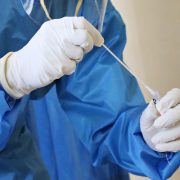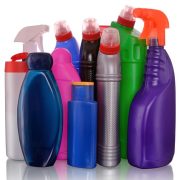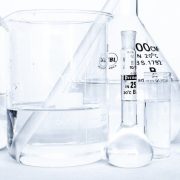What does this tool to do?
The job-exposure matrix (JEM) and the job-task-exposure matrix (JTEM) were developed in order to evaluate occupational exposure to specific disinfectants to nursing jobs, according to the type of job (JEM) and task performed (JTEM).
What is included in the matrix?
The JEM / JTEM are two dimensional matrices with nursing jobs / nursing job & tasks on one axis (rows) and 7 disinfectants and sprays on the other axis (columns).
The ‘job’ axis of the JEM contains 8 nursing jobs (emergency room, operating room, intensive care unit, other inpatient nurse, outpatient or community, other hospital nursing, nursing outside hospital and nursing education or administration).
The ‘job-task’ axis of the JTEM contains 24 categories combining jobs (8 categories: emergency room, operating room, intensive care unit, other inpatient nurse, outpatient or community, other hospital nursing, nursing outside hospital and nursing education or administration) and tasks performed weekly (3 categories: cleaning surfaces only, cleaning at least instruments, no cleaning task).
The ‘exposure’ axis of the JEM and JTEM contains 7 disinfectants (alcohol, hypochlorite bleach, peroxide bleach, glutaraldehyde, quats, enzymatic cleaners, formaldehyde) and sprays.
How were the exposure categories chosen?
Hospital workers, and particularly nurses, are highly exposed to cleaning and disinfecting products both in frequency and intensity. Cleaning and disinfecting products are complex mixtures of many chemical components, some of which may cause or exacerbate asthma. Ammonia, bleach, glutaraldehyde, ortho-phthalaldehyde or quaternary ammonium compounds (quats) are common chemicals found in cleaning products or disinfectants. Occupational exposure may be heterogeneous in a given occupation according to the tasks performed. Several authors underlined the importance of taking into account the tasks.
What criteria were used to classify a job as exposed for each category?
The JEM and JTEM were designed using data from the Nurses’ Health Study II (NHSII; http://www.nurseshealthstudy.org/). Data on current nursing job (‘Which best describes your current employment status?’), disinfection tasks performed (‘On how many days per week, on average, do you clean medical instruments/surfaces at work with disinfectants?’) and frequency of use of disinfectants (‘On how many days per week do you use the following disinfectants at work?’) were collected in a specific occupational questionnaire. Cut-offs were defined to classify exposure in ‘low’, ‘medium’ and ‘high’ levels for each disinfectant. Cuts-offs were chosen according to the distribution of the exposure prevalence in NHSII participants. The first quartile (Q1) and median were used to define cut-offs for low and high exposure, respectively.






